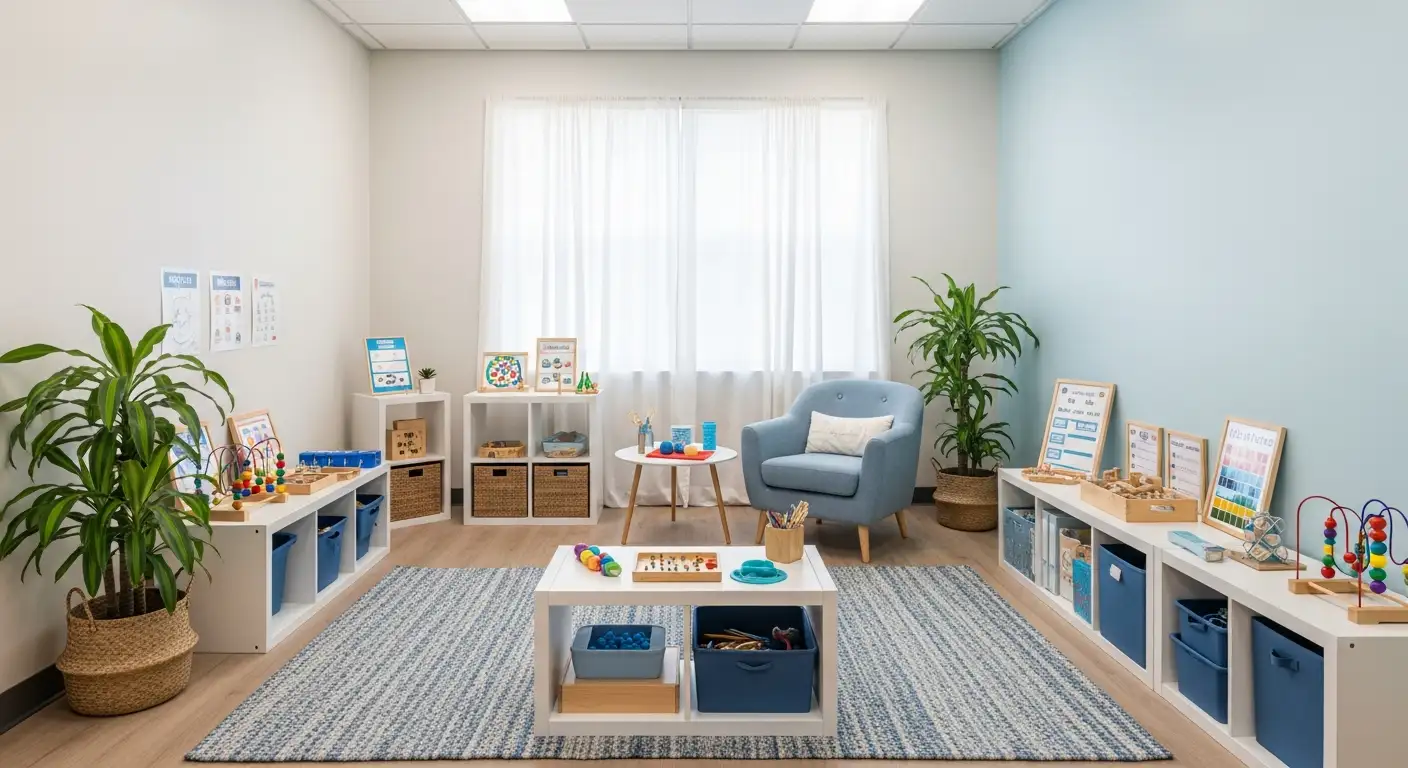Unlocking Potential with Evidence-Based Interventions
Building vital life skills in children with autism is crucial for fostering independence, confidence, and full community participation. Applied Behavior Analysis (ABA) stands as a scientifically proven, personalized approach that equips children with essential skills needed for everyday life. This article explores how ABA therapy supports skill development, the methods and strategies involved, and the significant benefits it offers to children on the autism spectrum.
Understanding the Scope and Impact of ABA Therapy
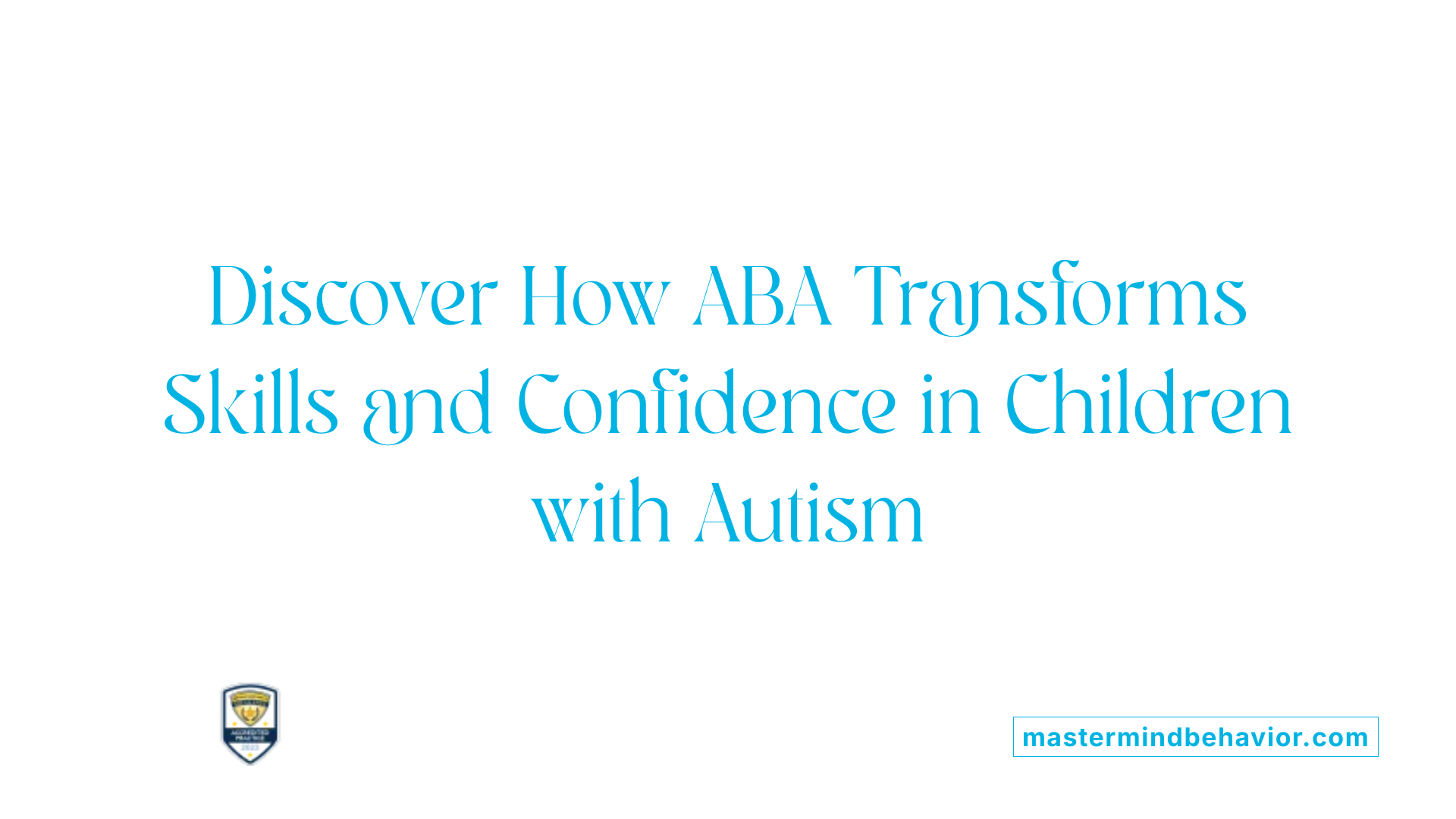
How does ABA help to improve a variety of skills for people with autism?
Applied Behavior Analysis (ABA) is a proven approach that helps children with autism develop essential life skills by teaching desired behaviors through structured, evidence-based techniques. One common method is Discrete Trial Training (DTT), which involves breaking complex skills into small, manageable steps. For example, teaching a child to brush their teeth might include steps like picking up the toothbrush, applying toothpaste, and rinsing. Each step is reinforced with praise or preferred items until the child achieves independence.
Another technique, Pivotal Response Training (PRT), emphasizes naturalistic learning by teaching skills during play or everyday activities. This approach increases motivation and encourages spontaneous use of skills like communication and social interaction.
ABA also involves consistent data collection and progress monitoring. This allows therapists and families to see which strategies work best and make necessary adjustments. Besides skill development, ABA aims to reduce problem behaviors that may block learning or social engagement.
Overall, ABA provides a structured yet flexible framework that supports meaningful enhancements in communication, social abilities, self-care, and everyday functioning, empowering children with autism to become more independent and confident.
Core Techniques and Strategies in ABA Therapy
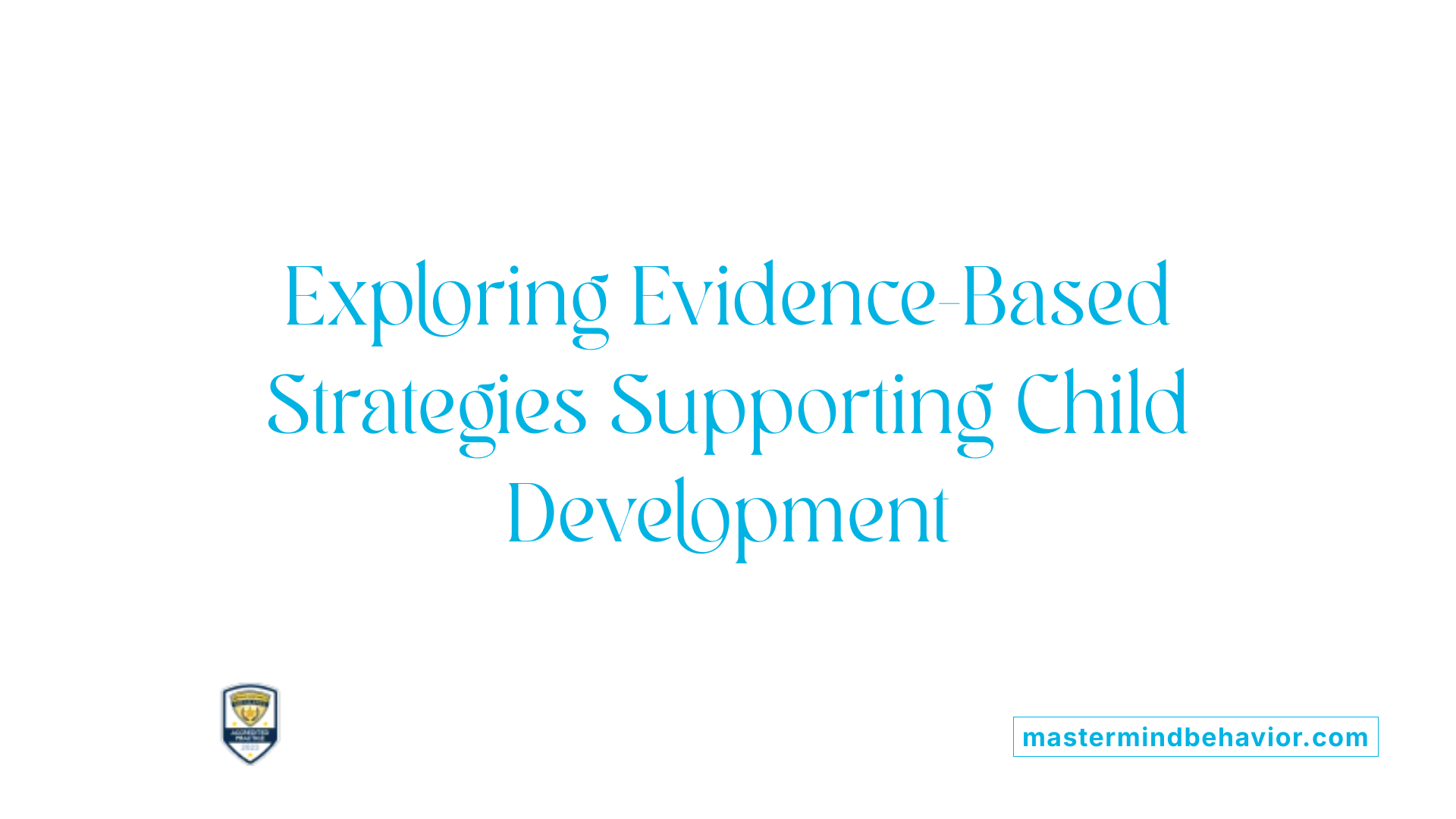
How does ABA therapy help autistic children?
ABA therapy supports children on the autism spectrum by teaching them vital skills needed for independent living and social integration. It utilizes evidence-based strategies like positive reinforcement, prompts, and data collection to monitor progress and adapt interventions.
Positive reinforcement is fundamental in ABA, rewarding children with praise, tokens, or preferred items to encourage desirable behaviors such as communicating needs or self-care. Prompts are used to guide children through new skills, gradually fading as they become more independent.
Data collection allows therapists and caregivers to track improvements over time, ensuring that each child's program is tailored effectively. This ongoing assessment helps adjust teaching strategies to meet evolving needs.
Techniques like natural environment teaching (NET) integrate learning into real-life situations, making skills more relevant and easier to generalize across settings. Structured programs break complex skills into manageable steps, such as teaching dressing or feeding, with the use of visual supports and reinforcement.
By applying these methods systematically, ABA therapy empowers children to develop communication, social, and daily living skills, ultimately fostering greater independence and confidence in everyday activities.
Teaching Essential Life Skills through ABA
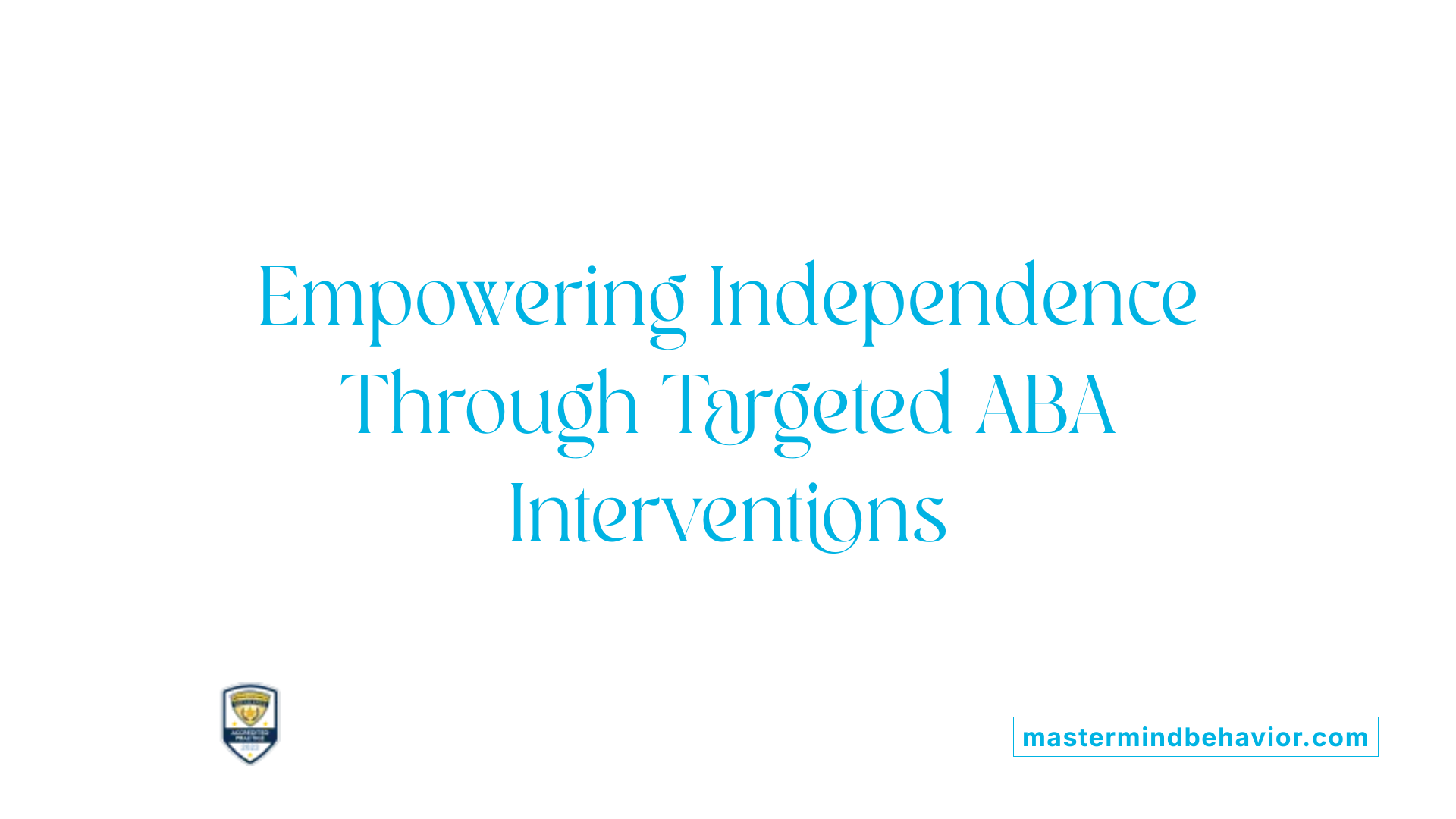
Does ABA therapy teach life skills?
ABA therapy actively focuses on teaching and reinforcing vital skills that children with autism need for everyday independence. These include communication, social interactions, self-care routines, and safety awareness.
The approach utilizes tested methods such as positive reinforcement, discrete trial training (DTT), and natural environment teaching (NET) to embed these skills into daily life. By breaking down complex tasks into manageable steps and providing consistent support, children learn to perform activities like dressing, brushing teeth, and engaging socially.
Personalized assessments help tailor programs to each child's strengths and needs. Certified behavior analysts (BCBAs) develop plans that incorporate visual supports, role-playing, and real-world practice. These strategies help children generalize skills across different settings, including home, school, and community.
Research underscores the effectiveness of early intensive ABA intervention in improving not only basic daily tasks but also long-term outcomes such as community participation and academic performance. Overall, ABA therapy plays a central role in promoting independence, confidence, and a better quality of life for children on the autism spectrum.
What specific skills are targeted by ABA for children with autism?
| Skill Area | Techniques Used | Goals |
|---|---|---|
| Self-care | Visual schedules, reinforcement, modeling | Dressing, grooming, toileting, personal hygiene |
| Daily living skills | Task analysis, behavior prompts, natural prompts | Cooking, cleaning, money management, household chores |
| Communication | PECS, sign language, social stories | Requesting, answering questions, expressing emotions |
| Social skills | Role-playing, group activities, imitation | Making friends, understanding social cues, sharing |
| Safety awareness | Scenario-based learning, visual aids | Recognizing hazards, emergency responses, boundary safety |
How does ABA support children across different environments?
In-home ABA sessions help children practice skills in their familiar surroundings, making it easier to transfer behaviors to school and community settings. Therapy often involves collaboration with family members and teachers to ensure consistency.
Through natural environment teaching, children engage in real-life activities—like grocery shopping or playing at the park—which reinforces the practical use of learned skills. Such holistic, contextual training promotes independence and safety.
In summary, ABA therapy’s structured, personalized approach empowers children to develop crucial life skills, improving their capacity to handle daily challenges confidently and independently.
Targeted Developmental Areas in ABA Interventions
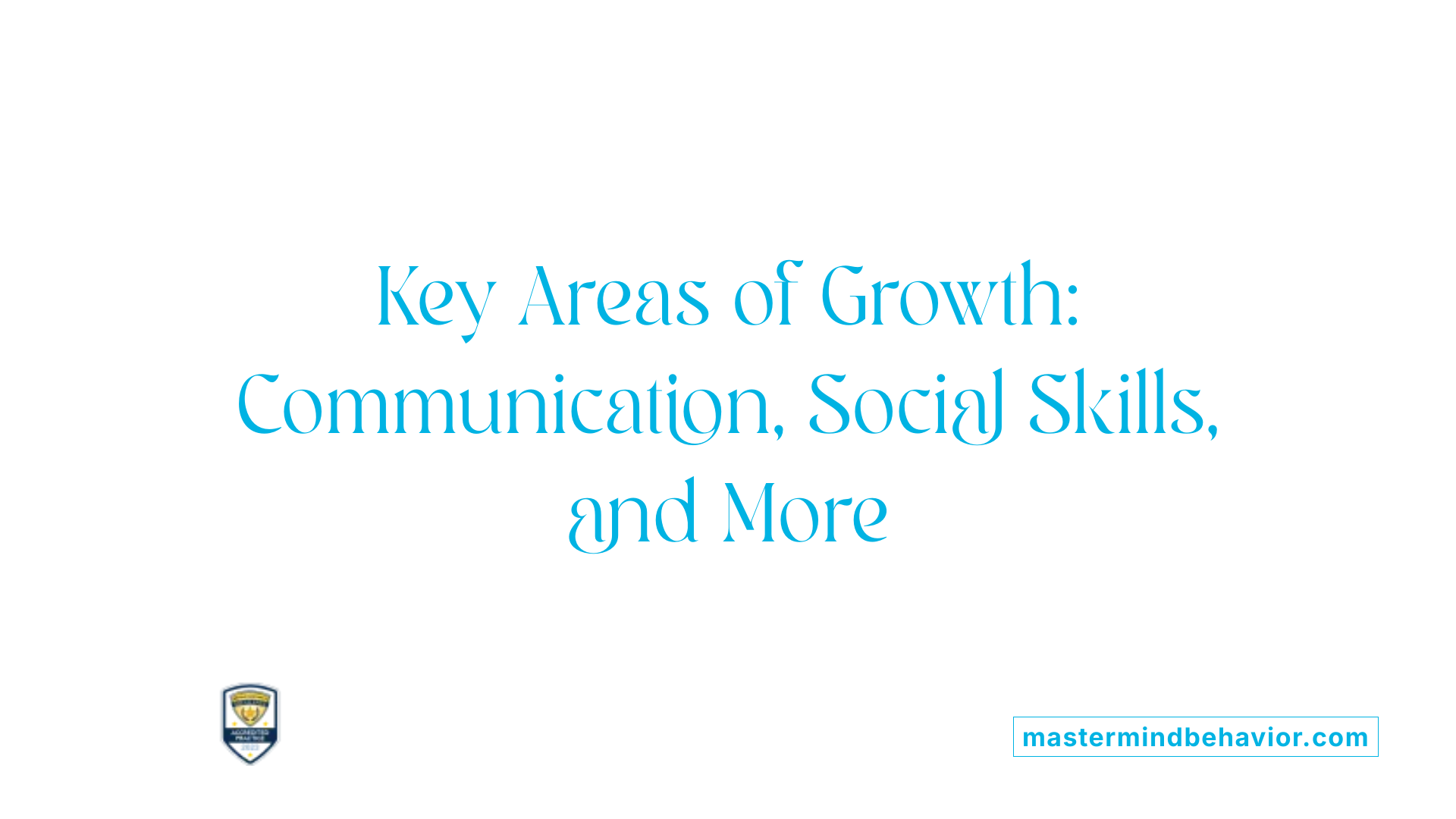
What specific developmental areas does ABA target for skill building?
ABA (Applied Behavior Analysis) covers a broad spectrum of developmental domains crucial for children with autism spectrum disorder. It is designed to improve various skills that foster independence and enhance daily functioning.
One of the primary focus areas is communication. ABA helps children develop both verbal and non-verbal language skills. Techniques such as picture exchange communication systems (PECS), sign language, social stories, and role-playing are used to boost expressive and receptive communication.
Social skills are another significant target. ABA programs work on helping children recognize and interpret social cues like facial expressions and tone of voice. Children learn to engage in group activities, make friends, take turns, share, and understand social boundaries, often through modeling, imitation, and role-playing exercises.
Self-care and daily living skills are essential components of ABA therapy. These include activities like dressing, grooming, brushing teeth, toileting, and household chores. Visual supports, checklists, repetition, and reinforcement strategies help children perform these tasks independently.
Cognitive skills such as problem-solving, memory, attention, and learning readiness are also developed through task breakdowns, structured activities, and real-world practice. These strategies enable children to better understand their environment and navigate daily situations.
Finally, emotional regulation is addressed to help children manage feelings, reduce impulsivity, and respond appropriately to various stimuli. This may involve behavioral strategies, tailored to each child's needs, to promote calmness and self-control.
In summary, ABA interventions are tailored to target communication, social interactions, self-care, cognitive development, and emotional regulation. These areas are addressed through individualized plans utilizing evidence-based techniques, including visual supports, reinforcement, natural environment teaching, and structured play, all aimed at fostering overall independence and social participation.
Techniques and Interventions Fostering Skill Acquisition
What are some effective ABA techniques for teaching new skills?
ABA therapy utilizes a variety of evidence-based techniques tailored to each child's needs. Among these, Discrete Trial Training (DTT) is widely used to break down complex skills into simple, manageable steps. This method involves clear cues, repeated practice, and positive reinforcement to help children learn new behaviors.
Natural Environment Teaching (NET) complements DTT by teaching skills during real-life activities like play, errands, or everyday routines. This approach promotes the generalization of skills from structured sessions to natural settings, making learning more functional and relevant.
Visual supports, such as picture cards, charts, and checklists, play a crucial role in enhancing communication and understanding. These tools help children grasp concepts, sequence tasks, and express their needs more effectively.
Role-playing activities are another engaging strategy. They simulate social interactions and daily scenarios, enabling children to practice social skills, take turns, and recognize emotions in a safe environment.
Reinforcement strategies, especially positive reinforcement like praise, preferred toys, or activities, are essential to encourage desired behaviors. Consistent responses and rewards across settings reinforce the learning process, leading to lasting behavior change.
These techniques, used individually or combined, support children in acquiring vital life skills, improving communication, and increasing independence through structured, supportive interventions.
In-Home versus Center-Based ABA Therapy

What are the differences between in-home and center-based ABA therapy?
In-home ABA therapy is delivered directly in a child's natural environment, such as their home. This setting allows therapists to tailor interventions to everyday routines and real-life situations children face.
Center-based ABA therapy occurs in specialized clinics or centers. These environments are designed for structured learning and provide opportunities for children to engage with peers and various activities.
How do the advantages compare?
In-home therapy offers the benefit of applying skills in familiar surroundings, making it easier for children to transfer learned behaviors to daily life. It also allows for more personalized attention and direct observation of routines.
Center-based therapy provides a controlled environment with access to a range of resources and activities not always feasible at home. It encourages social interaction with peers and can facilitate group learning.
What about caregiver involvement?
Caregiver involvement is essential in both settings. For in-home therapy, parents and family members often participate actively, learning techniques to reinforce skills outside sessions.
In center-based therapy, staff usually train caregivers on strategies to support progress, ensuring consistency across environments. Home assignments help bridge the gap between sessions.
How does each setting promote real-world practice?
In-home ABA therapy naturally incorporates real-life situations, such as grocery shopping or mealtime, providing practical learning moments.
Center-based programs often simulate real-world challenges through role-playing and community outings, preparing children for broader social settings.
Both approaches aim to develop independence and functional skills, with the choice often depending on the child's needs, family preference, and access to services.
The Role of Data and Personalized Programs in ABA Success
How do assessment tools shape ABA therapy for children?
Assessment tools form the foundation of effective ABA therapy. These standardized instruments help identify a child's current skill levels, strengths, and challenges. For example, tools like the Community-Based Skills Assessment (CSA) provide detailed insights into areas such as communication, social skills, and daily living abilities. This information guides therapists in developing targeted intervention plans tailored to each child's unique needs.
Why is ongoing progress tracking important?
Continuous data collection is a core aspect of ABA. Therapists regularly record behaviors, skill acquisition, and areas needing improvement. Using graphs and charts, this data reveals trends over time, showing which strategies are effective and where adjustments are necessary. Regular progress tracking ensures that interventions remain relevant and responsive, ultimately leading to better outcomes.
How are individualized treatment plans created?
ABA therapy emphasizes personalization. Based on assessment results, a certified behavior analyst (BCBA) designs a detailed, adaptable program customized for the child. These plans break down complex skills such as dressing or communication into smaller, manageable steps. Goals are set with measurable criteria, and the program incorporates preferred reinforcers to motivate the child.
What role does caregiver collaboration play?
Involving family members, caregivers, and teachers is vital for success. Collaboration ensures consistency across different environments, which helps children generalize their learned skills. Caregivers are trained to implement strategies, reinforce progress, and provide feedback. This teamwork creates a supportive network that sustains behavioral improvements and skill development beyond therapy sessions.
| Aspect | Function | Importance |
|---|---|---|
| Assessment Tools | Identify current skills and needs | Tailors interventions effectively |
| Progress Tracking | Measures daily and long-term outcomes | Adjusts strategies for maximum benefit |
| Personalized Programs | Break down skills into achievable steps | Builds confidence and independence |
| Caregiver Collaboration | Reinforces skills across settings | Ensures consistency and generalization |
Through meticulous use of assessment data and collaboration, ABA therapy offers a personalized pathway that promotes skill acquisition, behavioral improvements, and independence for children on the autism spectrum.
A Pathway to Independence and Confidence
ABA therapy provides a comprehensive and personalized framework for children with autism to develop crucial life skills. Through its structured approach, failure to learn is replaced with success, unlocking potential across communication, social, and daily living domains. Early intervention, caregiver involvement, and consistent practice across settings are key to fostering lifelong independence. As a scientifically supported method, ABA continues to evolve, integrating naturalistic techniques and technological advances to create meaningful improvements, empowering children to navigate the world with confidence and resilience. Building these skills sets the foundation for a fulfilling, self-sufficient future.
References
- Building Independence: Teaching Life Skills Through ABA Therapy
- Applied Behavior Analysis Builds Life Skills for Children
- Key Life Skills Taught in ABA Therapy for Kids
- How ABA Therapy Helps Build Daily Living Skills for Autism
- LifeSkills ABA | ABA Therapy for children with Autism
- How In-Home ABA Therapy Builds Real-Life Skills for Children with ...
- Key Activities in ABA Therapy for Autism
- How Can ABA Therapy Help a Child With Autism? | UTBS
- ABA Therapy and Life Skills for Everyday Independence




